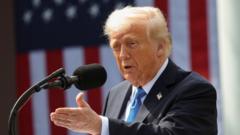Trump described his communication with Putin as productive, asserting that both nations will begin discussions to establish a ceasefire as part of a broader peace agreement. However, Putin's response did not include an unconditional ceasefire for 30 days, which has been heavily advocated by the US and European allies. In parallel, Ukrainian President Volodymyr Zelensky remarked on the importance of sustained American involvement in the peace dialogue, indicating the moment is critical for Ukraine.
Following Trump's initial call with Putin, Zelensky reaffirmed Ukraine’s demand for an “unconditional ceasefire,” stating stronger sanctions would be necessary should Russia remain uncooperative. He emphasized the necessity for Ukraine to be involved in all discussions concerning its future. The dialogue process is expected to also include representatives from the US and Europe, which Zelensky deemed essential for meaningful negotiations.
At a subsequent White House event, Trump asserted that America would not withdraw from its mediating role despite some frustrations over the slow pace of negotiations. Trump conveyed his belief that Putin may seek to conclude the conflict, describing a “red line” concerning the extent of his engagement if no progress is made.
During the negotiations, Putin indicated he was ready to collaborate with Ukraine on a memorandum outlining peace prospects, setting out key aspects such as settlement principles and possible timelines. While hopeful, he did not provide details on a ceasefire timeline.
European leaders, including Ursula von der Leyen, President of the European Commission, expressed gratitude to Trump for his persistent efforts in seeking a ceasefire, emphasizing the importance of American engagement in negotiations. An offer from Pope Leo to host peace discussions in the Vatican received positive feedback during the talks, although Kyiv has previously expressed skepticism regarding Putin’s intentions for lasting peace.
Despite past declarations of ceasefire by Russia, these have typically served as temporary pauses rather than long-term solutions. The ongoing conflict, sparked by Russia's full-scale invasion of Ukraine in February 2022, shows little sign of resolution as both sides navigate complex demands and a series of military confrontations.
Following Trump's initial call with Putin, Zelensky reaffirmed Ukraine’s demand for an “unconditional ceasefire,” stating stronger sanctions would be necessary should Russia remain uncooperative. He emphasized the necessity for Ukraine to be involved in all discussions concerning its future. The dialogue process is expected to also include representatives from the US and Europe, which Zelensky deemed essential for meaningful negotiations.
At a subsequent White House event, Trump asserted that America would not withdraw from its mediating role despite some frustrations over the slow pace of negotiations. Trump conveyed his belief that Putin may seek to conclude the conflict, describing a “red line” concerning the extent of his engagement if no progress is made.
During the negotiations, Putin indicated he was ready to collaborate with Ukraine on a memorandum outlining peace prospects, setting out key aspects such as settlement principles and possible timelines. While hopeful, he did not provide details on a ceasefire timeline.
European leaders, including Ursula von der Leyen, President of the European Commission, expressed gratitude to Trump for his persistent efforts in seeking a ceasefire, emphasizing the importance of American engagement in negotiations. An offer from Pope Leo to host peace discussions in the Vatican received positive feedback during the talks, although Kyiv has previously expressed skepticism regarding Putin’s intentions for lasting peace.
Despite past declarations of ceasefire by Russia, these have typically served as temporary pauses rather than long-term solutions. The ongoing conflict, sparked by Russia's full-scale invasion of Ukraine in February 2022, shows little sign of resolution as both sides navigate complex demands and a series of military confrontations.





















